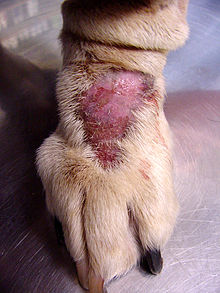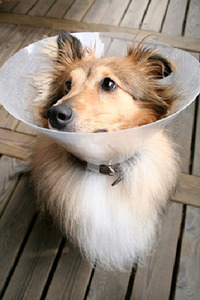Is it good for dogs to lick their wounds?
Poor dogs. When it comes to giving themselves medical care, they are really equipped with only one tool. That happens to be the same tool they have for just about everything – their mouths. Luckily, dog saliva is relatively clean (compared to the bacteria swarming in a human mouth), and full of enzymes, which promote healing. The first few licks help to clean away the debris that might be in the wound, and after that, licking cleans infectious matter from the outside world. The bacteria in their mouths isn’t too bad; in fact, many of them are actually helpful. Licking also stimulates blood flow and some other healing effects.
Cats, sheep, and other animals also lick their wounds. If you didn’t have hands – you might do the same!
The benefits of moderate wound licking:
The enzymes in dog saliva help destroy the cell walls of dangerous bacteria. Lactoferrin and other antibacterial and anti-viral compounds can also be found in saliva.
Licking a wound delivers protease inhibitors, and growth factors, which promote wound healing. Opiorphin is a pain reliever.
Finally, when meeting the skin, nitrate compounds in the saliva break down into Nitric Oxide, inhibiting bacterial growth and promoting healing.
Too much licking:
A good amount of licking can be helpful for small wounds. But remember, discourage licking after surgery, especially if there are stitches involved (dogs are likely to bite and pull them out).

You know Fido has been doing too much licking if closed wounds re-open, or fur is starting to get thin in the area. A lick granuloma is a skin problem that starts off small but is made into a big problem by over-licking.
Over-licking can be solved by bandaging the wound, spraying bitters on the site to make it taste bad, or using an e-collar (sometimes called the cone of shame).
Not all bacteria in dog saliva are beneficial, and sometimes harmful pathogens colonize a wound as a result of licking. This is usually only a concern if there is a surgical wound or another very large wound, or if there is a wound that hasn’t healed in a normal amount of time.
Helping wounds heal:
If your pet has a serious wound or is recovering from surgery, you might want to check out our awesome tPEMF device that accelerates wound healing and reduces pain without medication.
The Assisi Loop, has been clinically demonstrated to speed wound healing by 59%. The electromagnetic field produced by the Loop also triggers the nitric oxide cycle (better than the licking does), and a cascade of healing effects ensue.

Should you let your dog lick their wounds, or yours?
If it’s just a little wound, a little licking won’t hurt. If it’s getting serious (if it gets larger, if hair starts to thin or disappear, or if the wound is still “wet” after a day or two), please see your vet.
And if your dog wants to lick YOUR wound, it probably won’t hurt you, but maybe best to leave the doctoring to yourself. However your pooch might feel her nursing skills are being rejected, so if you decline the doggy doctoring offer, best to do it gently and without too much scolding.
Lastly, hopefully, neither you nor your friends will ever have a desire to lick your own wounds. Human saliva has fewer beneficial bacteria and many more dangerous ones.

